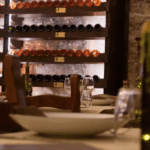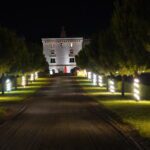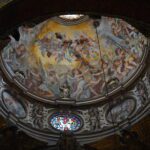Our trip to Japan took place in the Autumn of 2023. It is a time in history when the world is unsettled and uncomfortable with neighbours, where sabre rattling and conflicts are resolved through death and destruction. Where wars are fought over land and resources. Global idealism divides those who believe in freedom of speech and those who don’t.
Learning to live in peace, with mutual respect and security for each other, has been eroded by fanatics and variations of the truth obscure reason and diplomacy.
History has repeated itself for thousands of years.
Kyoto was the Imperial Capital City (Kyo means imperial city in Middle Chinese) for over a thousand years until Emporer Meiji moved to Edo, the national capital. Tokyo became the Eastern Capital City (Hence To – Eastern, Kyo – Imperial City).
Our journey from Gora, Hakone, took us back along the Hida railway to Odowara, where we changed onto the Bullet Train to Kyoto.
The bullet trains are indeed a remarkable achievement by the Japanese, travelling at 200mph. They are clean, spacious, and incredibly, they run on time. They have a national average delay of just 12 seconds!
So unsurprisingly we always arrived on time. In fact the Japan Rail app we were using would tell us how long we had to walk from one platform to another, such that we often just walked stright onto the next train.


















Arriving in a strange city where there are thousands of people moving in all directions can be overwhelming, but we were starting to get our bearings, and with this you get a sense of order when blending with pedestrians. They don’t push and shove or appear rude when you merge between commuters stepping onto one of the many escalators.
We took the underground to a location near our hotel and let the app guide us for the last few minutes to our accommodation.
















We didn’t have our suitcases to worry about because we had already arranged for them to be transferred from Gora in Hakone to The Hotel Intergate Kyoto in Shijo Shinmachi.
Our welcome in this small hotel was typical no-waiting Japanese efficiency. Our cases were waiting, and after a prompt check-in, we headed to our room.
It was okay, clean but not spacious. There was a lack of shelves and cupboard space, but it made no difference to our holiday. It was a base, and somewhere we had no intention of spending more time than was required. It was a great price and a fab location.
We used Get Your Guide, an app, to book an All-inclusive 3-hour food tour in the famous Gion district. It is well known because this is where many films, such as Memoirs of Geisha, were filmed.
Geishas are in short supply now, but there were thousands of them at one time. They entertain their clients with food, dance, conversation and music. They are known as Geiko. They have apprentices who are called Maiko who do all the hard work.










































































The Gion district is famous for the tea houses used for entertaining guests, but only those that previous clients have introduced. Without a formal introduction, there is no chance of seeing these geishas. Occasionally, they are seen quickly moving from one property to another, but signs warn you that photography of the Geisha is prohibited. In practice, this is to stop the paparazzi from stopping the Geisha from going about their business, allowing them to move freely without tourists stopping them for “just a quick pic!”.
The tour started at the theatre on the edge of the Gion district. Our guide was an American who had lived in Kyoto for the past five years.
I was startled when Saki was being poured for me and thought it would overflow … but that is how they serve it!
The following day we visited Nijo castle … just stunning!
Nijo Castle (二条城, Nijōjō) was built in 1603 as the Kyoto residence of Tokugawa Ieyasu, the first shogun of the Edo Period (1603-1867).



































































The grounds, gardens and inner keeps are in incredible condition, and I guess we rushed it near the end because I had booked a Tea Ceremony and Kimono Experience for my wife and me starting at 2pm. Tourists arrived and left in a very organised way. I was asked to remove my shoes and clothes and to put on undergarments. My dressers waited patiently and then dressed me in a dark navy Kimono outfit for men.
My wife had been taken across the road where she was dressed and her hair put up… she looked stunning!
After some initial photos, we went to a large room where we all knelt around the matted floor for the beautiful tea ceremony.






After the tea ceremony, we looked around the many shops in Kyoto.
That same evening, we joined a walking tour of the Gion district along with probably 50 other people. The guide was much better than the previous evening but repeated much of what we had already seen.
We spent our next day with a private guide called Taka, who took us outside of Kyoto to visit more sites that we would find difficult to do on our own. This included an amazing shrine with carvings from the 1980s, although they looked hundreds of years old. A moss garden, the Golden Temple and a Bamboo forest.










































































































































































































Our time with Taka was wonderful. He was a great guide with exceptional patience, professionalism, and English skills.
The following day, we booked a Bento Cooking class. This was well organised, with the organisers speaking English and accommodating our dietary requirements.



























We loved our time in Kyoto, but with one day left, we decided to take it easy by taking a train to Nara.
Nara was Japan’s first capital, but now it is famous for its shrine and deer, which have roamed freely here for 1000 years.
Local biscuits you buy are fed to the deer who bow to you to get tourists to give them food.. and it works.





































































































































So back to Kyoto, our cases already packed and on the move that morning to our next stop .. Hiroshima.




